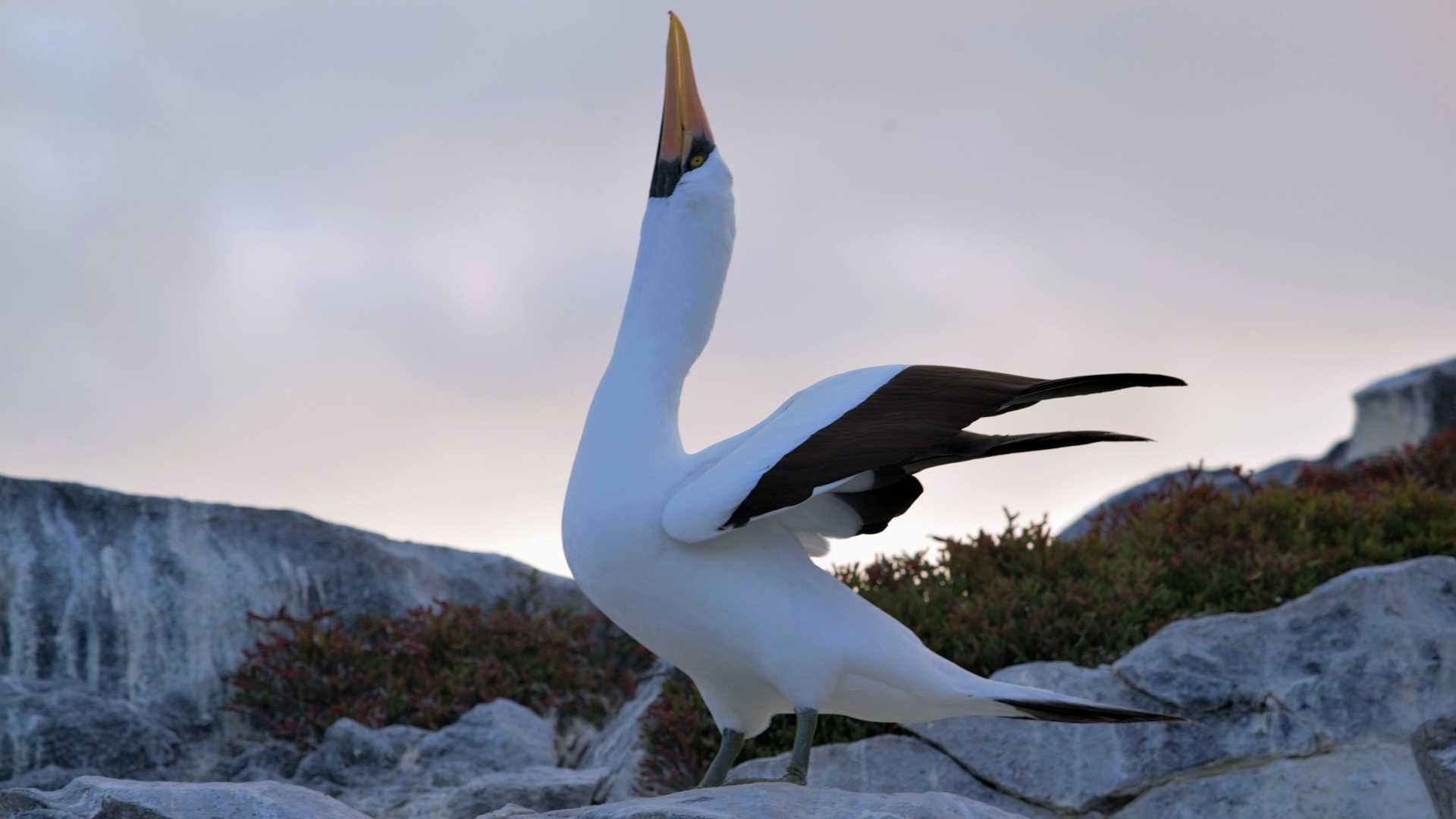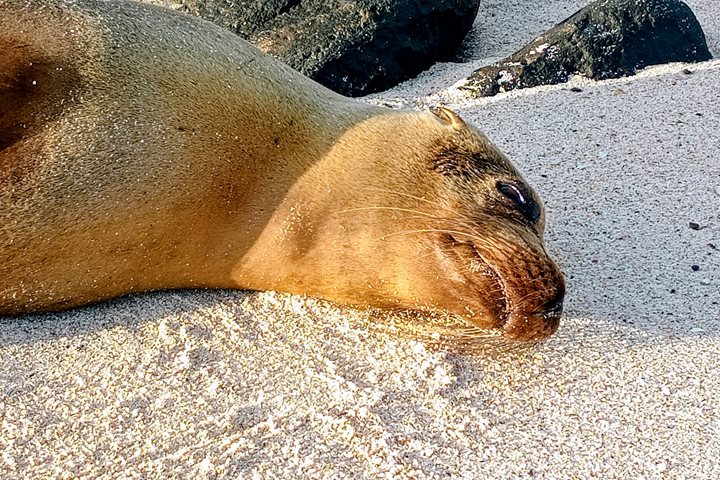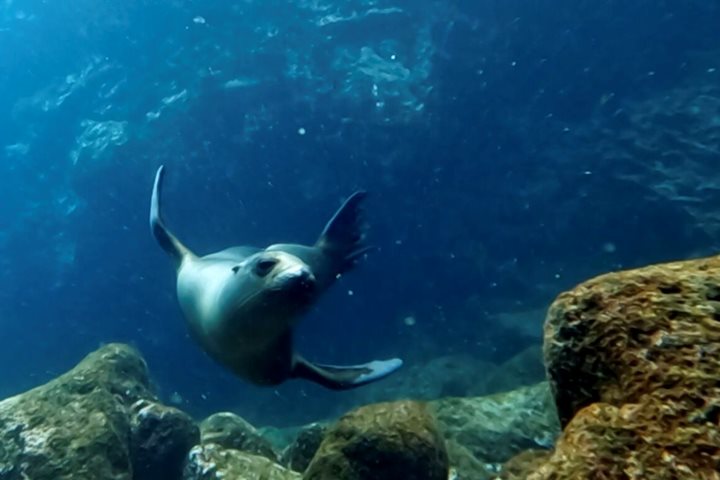After a long navigation from Floreana Island, early in the morning we arrived at Española or Hood Island, which is located in the southeasternmost part of Galapagos and considered the oldest island of the archipelago. Although the lack of rainfall had a significant bearing on the adaptation process that took place here, that was not an impediment to producing great endemism. Many species are only found here, such as mockingbirds, lava lizards, and the waved albatross, which is the largest seabird of the archipelago.
Early in the morning, our early birders had a chance to kayak along the calm waters of the island. We spotted seabirds in a feeding frenzy and some mockingbirds fluttering among the rocks. In the water, sea turtles and playful sea lions delighted our guests. After breakfast we headed to Gardner Islet, which is located a short distance from Española Island. With brilliant sun and a warmer ocean than yesterday, our snorkelers had an opportunity to discover the incredible marine life, observing many different species of colorful fish, stingrays, and playful sea lions. After the first activities, we headed to the white beach of Gardner Bay. It was interesting to observe the tameness of the sea lions and their interactions with our guests who enjoyed taking pictures of them. We observed some lava lizards walking across the rocks and sea lions trying to catch insects, while blue-footed boobies, frigatebirds, sea gulls, and finches flew about looking for their own meals.
In the afternoon, we weighed anchor and started sailing to Punta Suarez at the western corner of the island. At 3:15 PM we landed on a small dock heading inland to spot the colorful marine iguanas, whose reddish color contrasted with the black rocks. After few minutes, we arrived at a small beach, where two Galapagos hawks fed on sea lion placenta. Just beside them some mockingbirds, like good scavengers, tried to steal a little of that food. Behind this scene, dozens of marine iguanas warmed themselves on the beach.
It was windy and a little bit sunny, but it wasn’t an impediment to our reaching the nesting regions of Nazca boobies. Close to the cliffs, we observed many of them displaying their attractive courtship dances. Walking inland, we arrived at the waved albatross’ nesting area and observed many couples incubating their eggs, flying, or performing an elaborate courtship dance before mating.
Just before the sunset, we returned to National Geographic Islander II, observing as the sun disappeared in the west, coloring the sky with a special reddish color. Meanwhile in the air, seabirds came back home to a beautiful place that captivated naturalist Charles Darwin many years ago.







